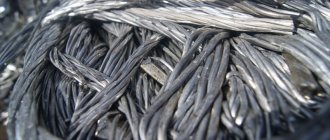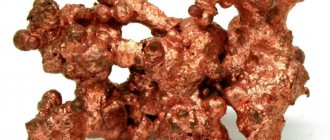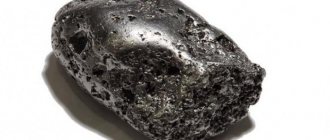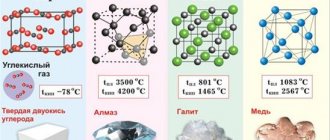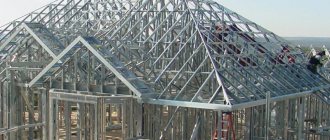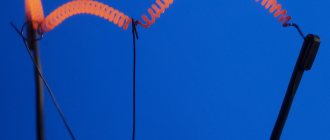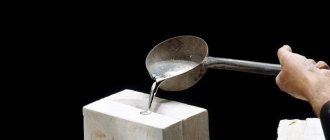Brass is a double or multi-layer copper-based alloy with the main alloying element zinc. Tin, iron, nickel, lead and manganese and other elements are also often added. According to the metallurgical classification, it does not belong to bronze.
The density of a material is a physical quantity that determines the ratio of the mass of a material to its occupied volume. In other words, density is the amount of mass contained in 1 unit of volume. In the SI system, the unit of measurement for density is considered to be kg/m3. What is the density of brass can be found out from the physical properties of the alloy; the density value may vary depending on the environment and measurement conditions. The density of solids can be obtained from a chemical reference table.
Density tables for metals and alloys
All metals have certain physical and mechanical properties, which, in fact, determine their specific gravity.
To determine how suitable a particular alloy of ferrous or stainless steel is for production, the specific gravity of rolled metal is calculated. All metal products that have the same volume, but are made from different metals, for example, iron, brass or aluminum, have different mass, which is directly dependent on its volume. In other words, the ratio of the volume of the alloy to its mass—specific density (kg/m3)—is a constant value that will be characteristic of a given substance. The density of the alloy is calculated using a special formula and is directly related to the calculation of the specific gravity of the metal. The specific gravity of a metal is the ratio of the weight of a homogeneous body of this substance to the volume of the metal, i.e. this is density, in reference books it is measured in kg/m3 or g/cm3. From here you can calculate the formula for finding out the weight of a metal. To find this you need to multiply the reference density value by the volume.
The table shows the densities of non-ferrous metals and ferrous iron. The table is divided into groups of metals and alloys, where under each name the grade according to GOST and the corresponding density in g/cm3 are indicated, depending on the melting point. To determine the physical value of specific density in kg/m3, you need to multiply the tabulated value in g/cm3 by 1000. For example, this way you can find out what the density of iron is - 7850 kg/m3.
The most typical ferrous metal is iron. The density value of 7.85 g/cm3 can be considered the specific gravity of iron-based ferrous metal. Ferrous metals in the table include iron, manganese, titanium, nickel, chromium, vanadium, tungsten, molybdenum, and ferrous alloys based on them, for example, stainless steel (density 7.7-8.0 g/cm3), black steel ( density 7.85 g/cm3) is mainly used by manufacturers of metal structures in Ukraine, cast iron (density 7.0-7.3 g/cm3). The remaining metals are considered non-ferrous, as well as alloys based on them. Non-ferrous metals in the table include the following types:
− noble metals (precious) - platinum, gold, silver and semi-precious copper;
− low-melting metals – zinc, tin, lead.
Types of brass
Types of brass differ from each other in different zinc contents. Depending on the percentage of zinc in the alloy, three main groups are distinguished:
- The first group with a zinc percentage of less than 34%.
- The second group with a percentage of zinc from 33 to 44%.
- Alloys of the third group contain more than 42% zinc and have limited use.
Alloy classification
According to this division into groups depending on the zinc content, the following classification of ordinary brasses is introduced:
- Red alloys. They are mainly used in the jewelry industry due to their appearance (brass can look like gold). Material with 10% zinc is similar to bronze, therefore it is used as its imitation; 15% zinc gives the material a reddish color; this alloy is used in car radiators; an alloy with 20% zinc has good elongation, so it is used for making pipes.
- Yellow materials. They contain from 25% to 35% zinc. Mainly used for sleeves and springs.
- Alpha-beta brass with a zinc ratio of 36 to 42%. They are less malleable than red and yellow brasses, so they are not used for making plates at low temperatures. Alpha-beta alloys undergo mechanical processing at high temperatures, so they were used in some ship structures in the 19th century.
Some alloys are called special, for example, the “similor” alloy. Similor consists of 80% copper and 20% zinc. Other specialty materials include Prince Albert Metal (86% copper, 14% zinc) and Crisokol (82% copper, 6% zinc, 6% tin).
In addition to the main elements, brasses contain other elements in minimal quantities, so these alloys are malleable and ductile at low temperatures, and some materials are not ductile at any temperature. All types of this material become brittle near the melting point.
Thanks to the zinc it contains, brass is harder than pure copper. At the same time, the alloy is easier to process on various mechanical machines, easier to mint and smelt products. The alloy is also resistant to oxidation in a saline environment, and its ductility allows the production of thin metal sheets. Ductility depends on three factors: temperature, structure and composition, and even minimal amounts of other elements can significantly change this physical property of the alloy.
The machinability of brass is greatly enhanced by the addition of a small amount of lead. This element is practically insoluble in it and forms globular particles, which greatly facilitate the mechanical processing process. In addition, lead is a good lubricant due to its low melting point, this fact significantly reduces the wear of the cutting tool when processing the material. Brass is practically not subjected to heat treatment; only the processes of recrystallization and homogenization annealing are used for it.
Special materials
Special brasses are considered materials to which, in addition to copper and zinc, other elements are added in small quantities in order to give them the appropriate properties. The most common special brasses are the following:
- with the addition of aluminum;
- the addition of iron increases the hardness and rigidity of the alloy compared to standard brass;
- the addition of lead gives the material mechanical resistance and increases its processing ability;
- the addition of manganese increases the strength of the material and reduces its malleability and ductility;
- the addition of tin gives strength to the material when drawn, while simultaneously increasing its corrosion resistance. In this case, there are two well-known alloys: “admiral metal,” which is highly resistant to corrosion and is therefore used as condenser pipes; “marine brass” - contains 40% zinc and is widely used in sweet and salty water;
- silicon additive (so-called bronsil) increases corrosion resistance and is used in the manufacture of valves, pumps and gears;
- complex brass with the addition of various elements, which gives it high resistance to oxidation and cavitation, which is why it is used in ship propellers.
Specific gravity of non-ferrous metals
Table. Specific gravity of metals, properties, metal designations, melting point
When rolling non-ferrous metal blanks, it is also necessary to know exactly their chemical composition, since their physical properties depend on it. For example, if aluminum contains impurities (even within 1%) of silicon or iron, then the plastic characteristics of such a metal will be much worse. Another requirement for hot rolling of non-ferrous metals is extremely precise temperature control of the metal. For example, zinc requires a temperature of strictly 180 degrees when rolling - if it is slightly higher or slightly lower, the capricious metal will sharply lose its ductility. Copper is more “loyal” to temperature (it can be rolled at 850 - 900 degrees), but it requires that the melting furnace must have an oxidizing (with a high oxygen content) atmosphere - otherwise it becomes brittle.
History of technology
Historians say that brass appeared simultaneously with bronze. Alloys were used to make jewelry, tips for tools, weapons, dishes, and cutlery.
To make any item, you had to know the technology of brass casting. Over time, the method developed and improved. Today, the material can be made at home or in production. To do this, you need to accurately carry out the technological process, follow the rules, choose the right tools and raw materials.
Product made of brass
Table of specific gravity of metal alloys
The specific gravity of metals is most often determined in laboratory conditions, but in their pure form they are very rarely used in construction. Alloys of non-ferrous metals and alloys of ferrous metals, which according to their specific gravity are divided into light and heavy, are much more often used.
Light alloys are actively used by modern industry due to their high strength and good high-temperature mechanical properties. The main metals of such alloys are titanium, aluminum, magnesium and beryllium. But alloys based on magnesium and aluminum cannot be used in aggressive environments and at high temperatures.
Areas of use
The use of brass covers a wide variety of areas of human activity. Thus, the golden color of the alloy determined its use in jewelry and various decorative elements. It is also used in boiler making, in the production of military equipment and ammunition, in the manufacture of capacitor wires and tubes, electrical terminals and cash coins.
Due to its resistance to destruction in salt water, the metal is used in the manufacture of equipment for various sea vessels, and its acoustic properties make it possible to make wind instruments: trumpets and accordions. Due to its bactericidal properties, the alloy is used to make door handles in hospitals and clinics.
If we talk about the use as decoration, then we should highlight the production of lamps, lamps, cornices and some jewelry. This kind of thing is produced mainly in the countries of Eastern Europe, in the CIS countries, as well as in many Arab and some Asian countries.
One of the interesting properties of brass, which is unusual for metals, is the absence of sparks when mechanically acting on the product. This unique characteristic makes it possible to use the material as vessels for storing and transporting flammable liquids.
Due to the ease of machining, high wear resistance and low price, the material is used for the manufacture of a variety of valves. Due to its high resistance to corrosion and cavitation, brass is used to make ship propellers. The material is also used in the production of some parts of modern computers.
Specific gravity and specific gravity of copper
Of the non-ferrous metals in their pure form, only aluminum and copper are used in construction work and industry. They have excellent characteristics suitable for the typical type of work. However, alloys based on these materials are becoming increasingly popular. One of the alloys of copper is brass. Brass is a multi-component or consisting of only two components copper-based alloy, in which the main element is the alloying component - zinc and additive components such as nickel, tin, manganese, lead, iron and others are rarely used.
Historical reference
According to historical information, the first metals used by man were copper and gold. Both metals are very soft in their pure state, so their use in human life is quite limited. Copper in particular has been used by ancient people since their early use of fire, and since Roman times the metal has been used more intensively in pipes, military weapons, statue decorations, and other uses.
To improve the characteristics of pure metals, for example, greater hardness and strength, over time, man came up with the idea of mixing them. Thus, around 3500 BC, bronze was obtained in Mesopotamia - an alloy of copper and tin, which was highly resistant to corrosion and was stronger than each pure metal separately. Thanks to these properties, bronze began to be used for the production of weapons and tools.
Around 1400 BC, brass was discovered, an alloy of zinc and copper that exhibited excellent resistance to deformation, had high ductility at low and high temperatures, and was highly resistant to corrosion and mechanical wear. However, its use became widespread only in 250 BC with the beginning of coin production in the Roman Empire.
Since that time, the use of brass began to be carried out in a wide variety of areas of human activity, from weapons to jewelry. In the 15th century, it began to be used for the production of astronomical instruments, and with the advent of printing, the alloy began to be actively used in printing. Since the mid-16th century in Europe, bolts and nuts have been made primarily from brass, copper and bronze. This alloy was used to make gears in watch movements, and in the 17th century in Holland, brass was used to make an optical telescope.
Brass weight table
Specific gravity of coke and its weight depending on units of measurement
| Material | Specific gravity (g/cm3) | Cube weight (kg) |
| Casting type brass | From 8.3 to 8.5 | From 8300 to 8500 |
| Casting type brass in ingots | From 8.3 to 8.5 | From 8300 to 8500 |
| Pressure treated brass | From 8.2 to 8.85 | From 8200 to 8850 |
Density tables for some substances
The density table is the first table of values of physical quantities that you become familiar with. In the previous paragraph, you learned how to “create” similar tables - carrying out numerous measurements and subsequent calculations.
You already know that when temperature changes, the volume of bodies changes. As a result, the density also changes. For example, at 0°C and normal atmospheric pressure, the mass of 1 m³ of air is 1.3 kg, and at 100°C, due to thermal expansion, 950 g of air is placed in 1 m³ (see figure). Therefore, in tables with density values, temperature is always indicated (see tables below).
The density of all substances also depends on the pressure exerted on them. For example, at an altitude of 10 km, the atmospheric pressure is much lower than near the ground, as a result of which the mass of 1 m³ of air there is only about 400 grams. The density of solids and liquids is much less dependent on pressure than the density of gases.
The right column of solids contains metals (see table). As you can see, the density of metals is several thousand kilograms per cubic meter. For example, the density of lead is 11300 kg/m³. This value can be written shorter if expressed in other units, for example: 11.3 g/cm³. Let us explain how this “translation” of one unit into another is done:
| 11300 | kg | = | 11300 kg | = | 11300 1000 g | = | 11300000 g | = | 11.3 g | = 11.3 g/cm³ |
| m³ | (100 cm)³ | 100³ cm³ | 1000000 cm³ | 1 cm³ |
The lower table shows the densities of gases and liquefied gases. Notice how significantly the density of the gas and the resulting liquid differs: air, nitrogen and oxygen are denser by approximately 700 times, hydrogen and helium by 800 times. Note: carbon dioxide, when cooled at atmospheric pressure, turns from a gaseous state immediately into a solid, which is why you see a dash in the table.
| Solids: density, kg/m³ (at 20 °C) | ||||
| Dry concrete | 2300 | Aluminum | 2700 | |
| Dry brick | 1800 | Gold | 19000 | |
| Ice, 0°C | 900 | Brass | 8300-8700 | |
| Marble | 2600-2800 | Copper | 8900 | |
| Paraffin | 900 | Tin | 7300 | |
| Cork | 240 | Lead | 11300 | |
| Dry pine | 500 | Silver | 10500 | |
| Window glass | 2500 | Steel | 7700-7900 | |
| Organic glass | 1200 | Cast iron | 7000-7800 | |
| Porcelain | 2300 | Zinc | 7100 | |
| Bulk solids: density, kg/m³ (at 20 °C) | ||||
| Gravel | 1500-1700 | Sand | 1200-1700 | |
| Potato | 660-680 | Coal | 800-850 | |
| Liquid substances: density, kg/m³ (at 20 °C) | ||||
| Acetone | 780 | Cow's milk | 1030 | |
| Petrol | 730 | Fresh honey | 1350 | |
| Fresh water | 1000 | Oil | 730-940 | |
| Sea water | 1030 | Mercury | 13500 | |
| Kerosene | 800 | Ruth, 0°С | 13600 | |
| Machine oil | 910 | Ethanol | 790 | |
| Sunflower oil | 930 | Ethyl ether | 710 | |
| Gases (at 20 °C) and liquefied gases, kg/m³ | ||||||
| Nitrogen | 1,25 | 850 | Helium | 0,18 | 147 | |
| Hydrogen | 0,09 | 72 | Oxygen | 1,43 | 1150 | |
| Air | 1,29 | 861 | Carbon dioxide | 1,98 | – | |
Advantages of brass
Brass has proven itself to be an elastic alloy with high corrosion resistance. Parts made from this material are durable and reliable in use.
Brass is especially valued in the refrigeration and food industries, due to the smooth and efficient operation of equipment made with this material, as well as a significant reduction in costs compared to the use of copper. Brass is also often used in the automotive, shipbuilding and aircraft industries.
If we talk about construction work, then brass is widely used in the production of sanitary products, in engraving work, as well as for finishing facades and furnishing the interiors of buildings.
Among the main advantages, it is also worth highlighting the following:
Composition and properties of the alloy
The proportions of metals in an alloy can vary widely, which affects the creation of a material with the desired properties. In industrial alloys, the percentage of zinc is always below 50%. The composition determines the following properties of the material:
- fusibility;
- formability;
- ductility;
- stamping ability;
- machinability.
At low temperatures, brass can be made into sheets of various thicknesses or drawn into wire. The density of brass and its melting point also depend on its composition. In general, the specific gravity of brass varies from 8.4 g/cm3 to 8.7 g/cm3, and the melting point is between 900 °C and 940 °C.
Pure copper has a density of 8.96 g/cm3 and a melting point of 1084 °C, and pure zinc has a density of 7.14 g/cm3 and a melting point of 420 °C, that is, these two properties of brass are close to the properties of copper, due to its greater relative amount in the alloy compared to zinc.
Mainly, brass products are used as decorative items due to their gold-like appearance and luster. This alloy is also used in devices that require little friction between working parts, for example, in locks and various valves. The alloy is also used in electrical devices, and due to its acoustic properties it is used in the manufacture of some musical instruments such as trumpets and bells.
Humanity has been familiar with brass since prehistoric times, even before the discovery of zinc itself. This alloy was originally produced by mixing copper and the mineral hemimorphite, which is a natural source of zinc. A hemimorphite mine was opened in one of the villages of modern Germany. This mine operated during the Roman Empire. By mixing copper and hemimorphite at high temperatures, zinc is released from the mineral and fused with the copper.
The physical properties of brass include the following characteristics:
- ability to be machined at both low and high temperatures;
- high resistance to oxidation and corrosion processes, even in aggressive environments;
- high wear resistance;
- high electrical conductivity;
- suitability for reusable recycling;
- the ability to retain its properties when exposed to high temperatures.
Indicators of the specific gravity of other metals
Specific gravity is an indicator that is an integral characteristic of other metals.
The specific gravity of silver is affected by the fineness of the alloy. When other metals (copper, nickel) are added to it, the specific gravity and density are lost. Thus, the density of copper is 8.93 g/cm3, nickel – 8.91 g/cm3. All values are calculated using formulas.
Silver is the same noble metal as gold. Its specific gravity is 10.5 g/cm3. It melts at a temperature of 960 degrees. The main physical characteristics of silver are:
- corrosion resistance;
- low resistance;
- increased light reflectivity.
Despite its natural softness, silver has a high density and specific gravity.
Titanium is a non-ferrous metal of a white-silver hue. It has high strength, although it is light in weight. So, it is 12 times stronger than aluminum and 4 times stronger than copper and iron. In terms of the degree of presence in the earth's crust, titanium is given fourth place among the rest.
The low specific gravity of titanium - 4.505 g/cm3 is more consistent with alkali metals. An oxide film forms on its surface, which prevents the formation of corrosion.
Zinc is also a non-ferrous metal with a white-bluish tint. It has medium hardness and an initial melting point of 419 degrees. Under the influence of a temperature of 913 degrees, this metal acquires a vaporous state. Zinc has a specific gravity of 7.13 g/cm3.
Normal temperature makes zinc brittle, but increasing it to 100 degrees makes the metal flexible and ductile. When interacting with air, an oxide film forms on the surface of zinc.
The color of lead is dirty gray, but this does not affect the natural shine of the metal. However, the glow stops quite quickly due to the formation of an oxide film on the surface of the lead. The lead alloy has a high specific gravity - 11.337 g/cm3. In this indicator, it exceeds zinc, aluminum, iron and some other metals. Despite its high density, lead is a very soft metal.
The table shows the specific gravity and melting points of other metals.
Read also: Types of keys for car repairs
| Name of metal | Melting point, °C | Specific gravity, g/cc |
| Zinc | 419.5 | 7.13 |
| Aluminum | 659 | 2.69808 |
| Lead | 327.4 | 11.337 |
| Tin | 231.9 | 7.29 |
| Copper | 1083 | 8.96 |
| Titanium | 1668 | 4.505 |
| Nickel | 1455 | 8.91 |
| Magnesium | 650 | 1.74 |
| Vanadium | 1900 | 6.11 |
| Tungsten | 3422 | 19.3 |
| Chromium | 1765 | 7.19 |
| Molybdenum | 2622 | 10.22 |
| Silver | 1000 | 10.5 |
| Tantalum | 3269 | 16.65 |
| Iron | 1535 | 7.85 |
| Gold | 1095 | 19.32 |
| Platinum | 1760 | 21.45 |
Lost wax casting of brass (WAX filament)
Before casting the stencils, we need to print out these same stencils. I will use WAX plastic from . WAX is essentially wax in the form of a filament. I recommend watching a video on printing with WAX material on ULTi STEEL:
Under one of my videos, a subscriber advised me to try printing wax on foil tape. Hmm, why not? I took a simple aluminum tape. To be honest, I’m not very happy with the result, because a large part, such as a gear, was torn off on one side.
Therefore, I cannot recommend this method, plus there is another huge problem - the aluminum tape leaves traces of glue on the glass.
I also printed out some mounting brackets that I found on the Thingweavers website and some sprues.
This is why I really adore the WAX material, its supports come out perfectly, it’s really super. In one of the following articles we will definitely talk about the possibility of post-processing wax.
For casting I will use the classic method of sand casting with liquid glass. To do this you need to make a flask. The flask is a mold in which the workpiece itself is placed, and the whole thing is placed around the molding mixture. For the flask, I used, since I myself work in a plumbing store, welds of 3 and 4 inches, respectively.
It is necessary to make holes in the flask so that the molding mixture has time to dry. After drilling, the flask looks like this:
But before we pour in the molding sand, we need to glue the sprues to the waxes. I took the classic red casting wax. Then I heat it up with a simple lighter, a few drops fall on the part, and I glue the sprue on top. One drop is enough, in fact, because if you drip a lot, you get a flash around the edges, and this can ruin the appearance of the part, so don’t overdo it - one drop is enough, two is, in principle, too much. At the same time, the melting point of casting wax is much lower than that of the same wax. The wax begins to soften at 90 degrees, so everything is fine. You can safely drip - nothing will happen to the waxes.
I made 3 sprues for the gear, one sprue for the corners, respectively, they are small, I don’t see any point in making any more sprues! But keep in mind that these sprues are not made according to science; they lead directly to the part. I will make a separate article on types of casting. So that you understand what and how. What are the pros, what are the cons, and how to achieve a wonderful result.
Now let's start preparing the molding sand. In my basement I have a whole large, hermetically sealed barrel of sifted river sand. In general, it is better not to use river sand, because it has round grains. There is also quartz sand, it is called quarry sand. This is ideal for making molding sand. Some say that river sand does not make such durable shapes. In fact, if you mix it properly (add liquid glass), I’ll talk about this later, then the shape turns out to be quite strong, basically like a stone. Next, liquid glass is added to the sifted river sand. The proportion is approximately 1:10, the main thing is not to overdo it so that the sand does not become too wet. And mix it. After you have mixed the molding mixture, you need to let it sit for a while, not for long. It needs to be soaked evenly and become moist. Unfortunately, it is impossible to determine specifically whether the molding sand is ready; this is a matter of experience. You need to mix the molding mixture 2,3,4,5,10 times, let it stand, and you, in principle, will begin to understand perfectly well that yes, it is ready. I still don’t know how to explain the phrase, “It molds well”
We put a little molding mixture into the flask, then we put the wax and start pushing sand on top.
Unfortunately, this technology implies that there should be no sprues when the wax is placed in a given molding mixture. Essentially, I seem to be disrupting the technical process, but I don’t want to bother making these tubes from the same molding sand - why? Excessive waste of material. And the flask I chose for this gear was not very successful. The problem is that at the edges of the flask walls there is approximately 5 millimeters left, because of this the sand does not get into the teeth well.
After throwing the molding mixture into the molds, we put them out to dry. I left it to dry for a day in the hot Astrakhan sun.
While it's drying, let's take a look at my purchase.
It was such a new purchase that I probably had it for six months before I got around to working with it. This is a smelter. And not just a smelter, but a jewelry smelter. I took the 2 kilogram model. It costs approximately 20 thousand rubles. And in reality it heats up to 1150 degrees. There is a huge disadvantage - that the crucible in which the molten metal, by the way, here it is,
made of graphite. And during casting, a problem arises that the graphite burns out, and the crucible does not last forever. After a certain number of castings it will become unusable and you will need to buy a new one. Therefore, just for fun at home to work with it, well, honestly, it’s a little expensive, a new crucible of 2 kg. It will cost you 1200-1500 rubles. You just need to find out how many castings it will last for before it breaks. Also included with the smelter were tongs for transferring the crucible with molten metal,
I also used it to carry flasks, it’s actually a very convenient thing. There were also instructions in the box, I highly recommend not to lose them, because there are dimensions of the crucible that you can, or rather will need to buy when the old one burns out. In general, I recommend keeping at least one spare, because it will take about a month or even more to travel, so that you have a spare for work.
We turn on the smelter and set it to 1150 degrees. I didn’t know that the smelter heats up so slowly; it takes about 40 minutes to reach operating temperature.
Well, the day in the sun has passed. We clean the flasks from excess sand that has stuck to the edges, and also use an iron brush to remove the sand that is poorly stuck together at the top and bottom. Everything has hardened, the molding mixture has become very hard, so we are not afraid to remove the excess with an iron brush. Now we need to melt this very wax, which is inside the flask. To do this, we put the flasks with wax into the oven, turn on the heater to maximum, somewhere up to 200-300 degrees, and heat it up.
Please note that wax from Filamentary is thicker, that is, simple casting wax pours out like water, and very easily, but wax flows out rather slowly, unfortunately.
And again, this is also a very slow process, up to 40-50 minutes. I remember an old video of Dani Craster where he melted PLA plastic, I can’t imagine how long it took him, I guess you can get old like that by accident.
It is recommended to stir the melt using a glass rod. But this is actually quite an expensive pleasure. I recommend using birch wood, thin and long. I honestly don’t know why, I saw it at a foundry. And as you know, the monkey sees, the monkey repeats.
To protect the melt from oxidation I will use boric acid. Don't be confused: borax and boric acid are two different things. Borax is good for aluminum, boric acid is good for casting brass and bronze. In the meantime, our metal is melting, it’s time to light the gas forge.
We place the flasks with the melted wax into the forge. And heat it up until almost white. The molding mixture (if it is mixed correctly) will easily withstand. By the way, don’t forget to protect yourself and wear a face mask and leggings, not gloves, but leggings.
Many of you have little idea what 1100 degrees is. 1100 degrees is so hot that at a distance of half a meter from you, your hands in welding gloves burn.
Pour liquid metal into the flasks.
If you heat the flasks normally, the metal remains in a liquid state for quite a long time.
And so the part was cast.
Next, just let it cool; if you can’t stand it, you can put it in water. The main thing is to make sure that the flask has cooled down sufficiently.
We saw off the sprues: They will then be melted down.
And let's look at the result. What interests me most is the gear as the most complex part - it was cast simply gorgeous. There are small sagging marks, but they can be easily removed. It is easier to remove what is unnecessary than to add what is missing. We saw off the sprues. Next, we remove the remains of the sprues on the grinder, after which we sandblast to remove all the remaining sand from the pores. And this is how the gear turned out. The teeth shed perfectly, it will be necessary to modify it a little and, in principle, we can put it into action. 100 percent there are micro cavities inside the casting, but again, please note that I cast it at home, not on an industrial scale, without using a vacuum, of course there will be pores. But for homemade products, this is simply enough for a thousand and one percent. and also for inexpensive commercial casting the quality is also decent. Let's lathe the gear to make sure there are no cavities inside. I removed about 0.2 mm on the lathe.
As you can see, although there are pores, there are damn few of them. And that's close to the surface. Well? I hope my first full-fledged post will be interesting/useful for you. Good luck in your endeavors! And as they say: “I don’t teach, I just do and that’s it.”
PS Original video if you also like explosions and that’s all:
Density of stainless steels
| Name of material, brand | Density ρ, kg/m3 |
| 04Х18Н10 | 7900 |
| 08Х13 | 7700 |
| 08Х17Т | 7700 |
| 08Х20Н14С2 | 7700 |
| 08Х18Н10 | 7900 |
| 08Х18Н10Т | 7900 |
| 08Х18Н12Т | 7950 |
| 08Х17Н15М3Т | 8100 |
| 08Х22Н6Т | 7600 |
| 08Х18Н12Б | 7900 |
| 10Х17Н13М2Т | 8000 |
| 10Х23Н18 | 7950 |
| 12Х13 | 7700 |
| 12Х17 | 7700 |
| 12Х18Н10Т | 7900 |
| 12Х18Н12Т | 7900 |
| 12Х18Н9 | 7900 |
| 15Х25Т | 7600 |
Density of ferrous metals
| Name of material, brand | Density ρ, kg/m3 |
| Steel 10 GOST 1050-88 | 7856 |
| Steel 20 GOST 1050-88 | 7859 |
| Steel 40 GOST 1050-88 | 7850 |
| Steel 60 GOST 1050-88 | 7800 |
| S235-S375 GOST 27772-88 | 7850 |
| St3ps GOST 380-2005 | 7850 |
| Malleable cast iron KCH 70-2 GOST 1215-79 | 7000 |
| High-strength cast iron HF35 GOST 7293-85 | 7200 |
| Gray cast iron SCh10 GOST 1412-85 | 6800 |
| Gray cast iron SCH20 GOST 1412-85 | 7100 |
| Gray cast iron SCh30 GOST 1412-85 | 7300 |

